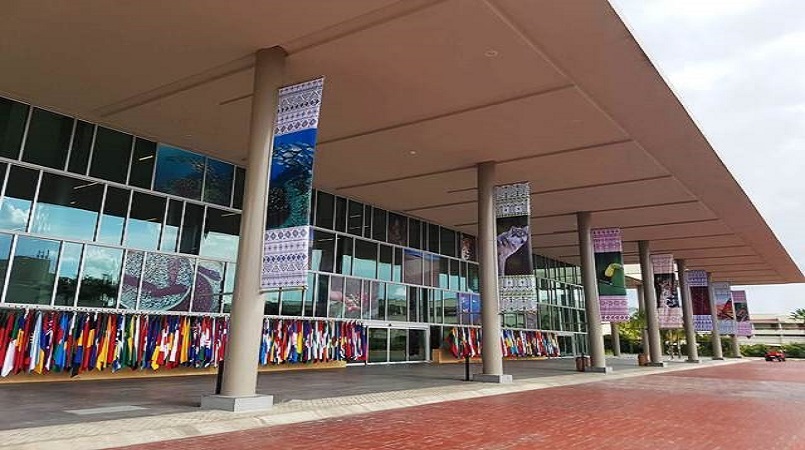
Pacific island protected areas will be highlighted at a biodiversity conference bringing together over 10 thousand delegates from 190 countries and organisations.
All delegates and countries come together united in their commitment to halt the loss of biodiversity.
Fourteen Pacific island countries are Parties to the Convention on Biological Diversity for which the 13th Conference of the Parties started last week in Cancun, Mexico (CBD COP13).
All have committed to achieving the 20 Aichi Biodiversity Targets with the ultimate goal of reducing biodiversity loss.
"We want to share our actions that reflect our commitment and intent to protect our biodiversity, in particular reaching Aichi Targets 11 and 12 – to have area based conservation measures in place and to prevent the extinction of known threatened species," said Mr. Stuart Chape, Director of the Biodiversity and Ecosystem Management Division of the Secretariat of the Pacific Regional Environment Programme (SPREP).
"Our island region has actively worked on strengthening protected areas as we all know too well just how important our biodiversity is to us, as Pacific islanders.
It is the backbone of cultural traditions, helps feed us and is the source of livelihood for many. We understand the Pacific Way of Life is at stake unless we work to protect it."
Of over 720 recorded animal extinctions in the last 400 years, half of these were island species. Aiming to make a difference, the Pacific islands are working towards achieving the Aichi Targets to make a significant difference by the year 2020.
This week will see all Parties come together to assess actions and negotiate a path forward to ensure these targets are met within the next three years.
The 13th Conference of the Parties to the UN Convention on Biological Diversity (CBD COP13) and the eighth Conference of the Meeting of the Parties (COP-MOP) of the Cartagena Protocol (COP-MOP 8) and the second COP-MOP Nagoya Protocol (COP-MOP 2) will be held from 4-17 December.
The Cartegena Protocol on Biotechnology Safety is to ensure the handling, transport and safe use of living modified organisms resulting from the application of modern technology and can have adverse effects on biodiversity.
Ten Pacific island counties are parties to the Cartegena Protocol, these are Fiji, Kiribati, Marshall Islands, Nauru, Niue, Palau, PNG, Samoa, Solomon Islands, and Tonga.
The Nagoya Protocol on access to genetic resources and fair and equitable participation of benefits arising from their use. The Pacific island parties to the Nagoya Protocol are Fiji, Federated States of Micronesia, Marshall Islands, Samoa and Vanuatu.
Both of these are linked to the CBD COP overall and feed into achieving the goals of the Convention for which the Pacific parties are the Cook Islands, Federated States of Micronesia, Fiji, Kiribati, Marshall Islands, Nauru, Niue, Palau, PNG, Samoa, Solomon Islands, Tuvalu and Tonga.
"The outcomes of the meetings are significant for our region in knowing where we are at in meeting the global biodiversity targets and key decisions on further actions and resources available to take to achieve these," said Mr Chape.
"We are doing our part in contributing to the achievement of the global targets and our successes and actions taken will be shared and showcased throughout the meetings."
A special side event showcasing the Pacific islands will be held today titled - Our Pacific Voyage: Navigating our way towards the implementation of the Aichi Targets.
This will feature the perspectives from the Pacific as they work towards strengthening the Protected Areas in their islands. - #PacificProtectedAreas.
Photo: Moon Palace Arena, Cancun, Mexico - venue of the CBD COP13
